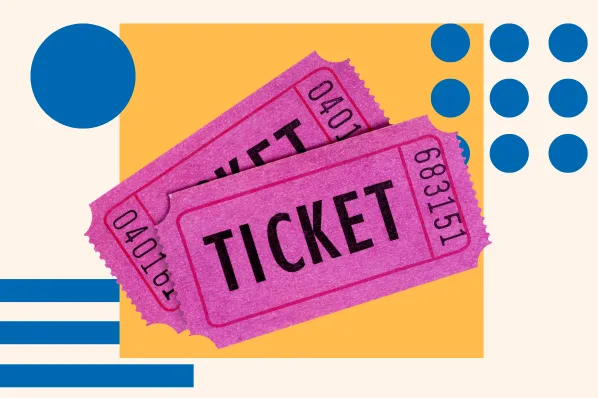What does the term "viral" make you think of first: internet fame, or a crippling illness?

Although both connotations of the word "viral" bring to mind the concept of catching on quickly, only one type of "virality" is universally desirable to marketers and product designers alike.
Virality refers to how something is able to catch on. Sometimes, it's a wintertime cold spreading rapidly throughout an open-office setting. But other times, it's when a new product, app, tool, or piece of content hits the internet and takes off, to the point where hundreds, thousands, and millions of people are aware of and using it.
Virality isn't something that just randomly happens, though. It's a growth strategy backed in mathematical models that marketers and product designers can experiment with to grow visitors, users, and eventually, customers.
So read the rest of this post (and keep taking your Vitamin C supplement) to make sure you understand how to achieve the right kind of virality -- and how other companies have done it, too.
Virality Definition
"Virality" can be defined as the likelihood of something being shared and spread widely among different users, readers, or customers online. Some examples of things that can go viral are blog posts, websites, apps, games, or products.
In the context of this blog post, we'll be referring primarily to product virality, which refers to users and customers generating new users and customers of a product by either inviting new users in their network to get more value from the product or by sharing and evangelizing a product to grow awareness within their network.
Virality Formula
C(0) * k = # of customers at end of time period
The product virality formula is calculated by multiplying the number of customers at the beginning of a time period by the viral k coefficient, which measures the conversion rate of new customers invited by existing customers to start using a product.
The formula for calculating viral growth is centered around the viral coefficient, also referred to as the k coefficient, that measures the number of new customers or users each existing customer can successfully convert.
(It's important to note that the k coefficient harkens back to this term's roots in viral diseases: The biological version of the k coefficient would refer to how many other people to which one could reasonably expect a sick patient to spread the virus. Yuck.)
C(0) = the number of customers at the beginning of the time period you're measuring
i = the number of invitations each customer shares
c = the percent conversion rate of each invitation
k = the number of new customers each existing customer can convert (i * c)
The k coefficient must be greater than 1 in order to achieve true "virality."
So, in order to determine the degree to which your product can go viral during a given time period, you multiply the number of customers at the beginning of the time period by the k coefficient to determine how many customers you'll have at the end of the time period.
Next, let's dig into the ways companies can achieve product virality. To learn more about calculating and measuring virality, you can use David Skok's excellent downloadable spreadsheet to play around with the inputs and track your own k coefficient.
5 Methods of Achieving Product Virality
There are several methods of achieving product virality, and they fall within two basic categories:
Pull Product Virality
This occurs when product virality is achieved by users or customers spreading awareness of the product within their network. Instagram was an example of pull product virality when it launched with a feature to cross-post images on Facebook and Twitter. Their friends didn't need to be Instagram users to see the images, but it spread awareness of the photo editing and filtering app.
1. Word-of-Mouth Virality
Word-of-mouth virality is what a lot of people first think of when they hear about something "going viral:" It occurs when a product is so good, fun, or interesting that people can't stop telling their friends and colleagues about it, to the point where they start using it, too.
A long time ago, Google was the perfect example of word-of-mouth virality: When friends or colleagues asked a question, you could reply with a cheeky "Google it" in order to spread the word.
2. Demonstration Virality
Demonstration virality occurs when products catch on thanks to users and customers showing them off simply because they liked using them. Instead of telling people about a product, users would show how they used the product -- which usually led to people asking about it and then trying it out for themselves.
Pinterest achieved demonstration virality. Users could share their Pinterest boards with friends (or significant others they were hoping would propose), and, although they didn't need to download Pinterest in order to see the user's board, in many cases, seeing the cool visual app would prompt the friend to download it and create their own board.
3. Outbreak Virality
Outbreak virality occurs when a product is so fun, engaging, or interesting to use, that, all of a sudden, it seems like everybody around you is using it, too. Whether the product or app is addicting, fun, or popular, it achieves virality simply because everyone else is doing it.
An example of outbreak virality you might remember is Pokémon GO. For a few weeks in 2016, it seemed like everyone around you was playing the viral game on the streets of whatever city you lived in.
Distribution Product Virality
This occurs when product virality is achieved by users or customers inviting people into their network to join in order to gain more value from the product. Facebook was an example of distribution product virality when high school and college students invited their friends to join the social network in order to connect with more people at once.
4. Infectious/Network Virality
Infectious virality, which is sometimes known as network virality, is achieved when customers and users invite other people to start using a product because the strength of the product is in its network. In other words, the product becomes more useful the bigger the network is, so users want to invite others to join so they can start getting value from friends and colleagues using it, too.
A classic example of network virality is Dropbox. When the cloud-based file sharing app was released, the first users had to invite people to join Dropbox. They derived more value from the app by inviting members of their personal and professional networks to join -- people whom they wanted to quickly and easily share files with, but they needed to sign up for Dropbox to do so.
5. Incentive Virality
Incentive virality is similar to word-of-mouth virality, but with one crucial difference -- the incentive.
Incentive virality occurs when users or customers are incentivized to refer their friends. Whether the incentive is a discount, a gift card, money, or storage space, users have a great reason to get more people using the product or app. In some cases, the incentive goes both ways, and both the referrer and the new user get a benefit.
Lyft uses incentive virality to inspire riders to refer their friends. Each rider gets a personalized link they can share with people, and, when it's redeemed, both the referrer and the new rider get a free Lyft ride.
It's important to note that, although "viral marketing" is a term that's used a lot, virality isn't something you can create with marketing alone.
Virality needs to be built into your product from the start so it becomes easy to share and evangelize. You have to build your product in a way that allows it to achieve viral growth. This blog post won't get into the weeds of product development, but this fantastic article by Viral Loops gives you a few places to start when you start designing and shipping.
How 6 Companies Achieved Product Virality
1. Loom
"More so than ever, instant gratification is critical to a product's success," explains Joe Thomas, Founder and CEO of Loom, a browser and screen recording video tool. "Your product must deliver value -- whether artificial or real -- that activates a dopamine release in the person using it. This has to happen the first time they use your product. The later you delay this gratification, the more drop-off you'll have."
"From there, the sharing has to feel organic to your product experience. Incentivized referrals are fine in the early days, but realize that those will only get you so far."
Loom's golden ticket is "having users create or find content worth sharing on [our] platform." Then, Loom makes sharing easy by providing a "Copy Link" CTA so users can quickly and easily start recording and sharing with their team. "Your users will know which platform they want to go to share videos," Thomas explains. "Don't try to over-engineer the experience too early. Just make it dead simple [for them]."
By building a product that capitalized on motions people were already trying to execute on and improve in workplace settings (effective communication), Loom was able to immediately provide value for users that inspired massive, viral growth in a short period time as others started using the tool they saw their friends and coworkers trying out.
Product Virality Methods Used: Outbreak Virality; Infectious Virality
2. BounceX
Ryan Urban, Co-founder and CEO of BounceX, a marketing cloud company that first created exit intent modules (like the one that might have popped up on this blog post), explains that there are two types of virality tactics: manufactured hacks and authentic virality.
He believes that the best, most authentic virality tactic is creating the best product out there among its competitors so it's not really a choice for customers which product to sign up for -- because one option is by far better than others.
"BounceX created exit intent modules," Urban explains. "All of the other overlays on the market sucked, so we decided to make a better one. We're an enterprise company, so we knew we'd only have a few hundred clients, but those clients would have a ton of traffic. We knew we had a great product out there that was different and better than the competitors."
BounceX tried a lot of different virality tactics -- some worked, and some didn't. But according to Urban, their greatest successes were achieved by taking inspiration from some of the most viral products of all time -- such as Hotmail and, later, Gmail.
So BounceX put a simple "Powered by BounceX" message in the bottom left-hand corner of its exit intent modules on client websites. "The message was only text, and it didn't even include our logo or a link back to our site," says Urban. "It wasn't supposed to be a CTA, and it gave people the opportunity opt out if they wanted. But on the flip-side, the message created utility for viewers who wanted to add these modules to their own site, and they would proceed to Google our brand to learn more."
"We did a virality hack in a tasteful and organic way," says Urban. "It wasn't about click-through rates -- the experiment made new users find us organically."
Product Virality Methods Used: Outbreak Virality; Demonstration Virality
3. Wordable
I spoke to Gregg, the CEO of Wordable, a tool that allows you to instantly export Google Docs into WordPress, who warns against leaning too hard into the obvious to achieve product virality:
"Since our core customer base writes for a living, there's an obvious opportunity to spread virally by leveraging our customers and their audiences as a growth opportunity," he says.
"However, we didn't want to just insert an 'I saved several hours exporting this article from Google Docs to WordPress with Wordable' link at the bottom of every post. Rather, we wanted to create an opportunity for users to opt-in and take advantage of our free Wordable program."
Wordable offered free Google Docs to WordPress exports in exchange for blog post mentions, links at the bottom of blog posts, and email blasts that promoted the tool. As he explains, "the ask was pretty natural, and since our customers are mainly content marketers, it was easy for them to drop a mention (and get free software). And it was effective for us, because they already had an audience who are would-be customers."
Product Virality Methods Used: Incentive Virality
4. LawnStarter
Ryan Farley, Co-Founder and CMO of Lawnstarter, a lawn-mowing booking app, warns against businesses trying to replicate the same exact product virality as other companies that achieved, in his words, "true virality."
"Most businesses will never actually be viral in the sense of PayPal, LinkedIn, or Dropbox, where users invite other users in a direct way, and do it frequently enough to be meaningful," Farley says. "For example, a database software could ask you to invite your friends, but nobody would buy a $300K database license as the result of a simple referral.
Lawn care is the same way. Just because you send someone a link, doesn't mean they are looking for lawn care then and there."
So, instead of trying to replicate the same success of other tools that are more unique or proprietary, LawnStarter took another tactic: by trying to "hack" viral awareness.
"It's important to take a step back from prioritizing direct conversion and think about how virality can increase traction in the awareness or consideration phrases. I like to think of Jonah Berger's virality principle of 'Make private behavior public.' One tactic we've done is taking pictures of people's lawns, making them look prettier via Photoshop, and adding a watermark for customers to share on social media.
Do these images convert? No. But they let people's friends know we exist."
Another strategy LawnStarter used to achieve awareness virality was something that -- seemingly -- had nothing to do with lawn care at all.
"Many lawn care companies put yard signs in front of homes, which serves to make private behavior public. However, we always found it tacky. So rather, we offered certain customers Little Free Libraries, which create visibility in target neighborhoods, as well as a story that neighbors want to share with one another, while mentioning our brand name."
Product Virality Methods Used: Word-of-Mouth Virality; Demonstration Virality
5. BubbleIQ
I asked Fletcher Richman, Co-Founder and CEO of BubbleIQ, a customer support integration tool, about the product virality strategies his team employed.
In the beginning, BubbleIQ started with providing simple, straightforward incentives to kickstart user growth. "We created a simple typeform and offered our customers a free pair of AirPods if they referred a customer that signed up. We got referrals from more than 10% of our customers and are now building that more deeply into our product."
But the team also made sure to build virality loops into the BubbleIQ product. "When B2B companies have shared Slack channels with their customers, they use BubbleIQ to make tickets in those Slack channels. If one of our customers has 20 Slack channels, each of those is an opportunity for another company to see our product in action, which has led to many new customers. "
Product Virality Methods Used: Incentive Virality; Demonstration Virality
6. HubSpot
I asked former and current HubSpot colleagues about product virality strategies they used to build some of HubSpot's freemium tools.
Sales
I asked Brian Balfour, who led growth for HubSpot's Sales product (previously known as Sidekick), how his team worked to achieve virality.
"During the first two years, virality accounted for about 40% of our new users," explained Balfour. "There were two primary viral loops. The first was an incentivized loop, wherein the free tier of the product gave you a certain number of notifications and access to features. Once you hit your limit, you could either upgrade (and pay), or invite other people to give and get free months of the unlimited premium version of the product.
Most people think about money for incentivized loops, but there are multiple types of incentives. We break all of these down in the Reforge Growth Series, but some examples would be financial, features, content, social, etc. In this case, we positioned the incentive as getting more of something they already understood and wanted (notifications and premium features)."
The second viral loop? Word-of-mouth virality.
"There was a hypothesis among the team that our product was actually anti-word of mouth because our primary users (sales professionals) saw the tool as a competitive advantage over their peers," says Balfour. "After talking to a lot of users, we found this was only partly true. Most sales professionals are very close with a few others on the sales team that they would share things with.
So, the key lesson here was two-fold. First, for something to spread, a user doesn't need to tell their entire network. They can tell a few people and, if the conversion rate of those few people is high, then the viral loop still works.
Second, we leaned into the "secret weapon" messaging -- instead of fighting it -- to encourage sales reps to spread the tool. It's always better to double-down on the psychology behind the organic behavior, rather than trying to convince them of something different."
Free Products
My colleague David Khim works in growth marketing for HubSpot's freemium products, and he uses a few guiding principles when trying to capitalize on virality to grow our free user base.
"As a B2B company, we have two users to think about: Our customer: the person that's using our product to grow their business, and our customer's customer: the person our customer communicates with and who engages with our products to connect with our customer," says Khim.
The team makes sure to prioritize customer success over HubSpot's own success when trying to grow product virality. "For example," Khim says, "If adding a well-designed viral loop to forms created by free users would generate more signups, but decrease the conversion rate of a customer's form, we won't do it. Instead, we test and measure outcomes before committing to adding viral within the product."
We don't want to slap on "Powered by HubSpot" links all over the product. Instead, "we want to be cautious about how much branding we add and be aware of how intrusive viral links may be."
Tactically, Khim uses a few strategies to guide product virality experimentation.
"Because HubSpot is a platform, we have multiple features that are inherently viral, such as Meetings, Forms, and Email," he says. "Each of those features have natural points introduce viral loops.
Additionally, we've found that improving the signup completion rate has a bigger impact on the k coefficient than improving any other number. So we doubled-down on improving the sign-up experience, instead of trying to experiment more widely."
Khim also tries to avoid getting too stuck on the numbers.
"Virality isn't just about optimizing for clicks," he explains. "The other side of virality is thinking about optimizing the user's experience of your product. Give people such a good experience that they want to click on the viral link to learn more and sign up for your product. Virality requires both quantitative and qualitative thinking."
Product Virality Methods Used: Incentive Virality; Word-of-Mouth Virality; Outbreak Virality
To learn more, read everything you need to know about viral freemium products next.










